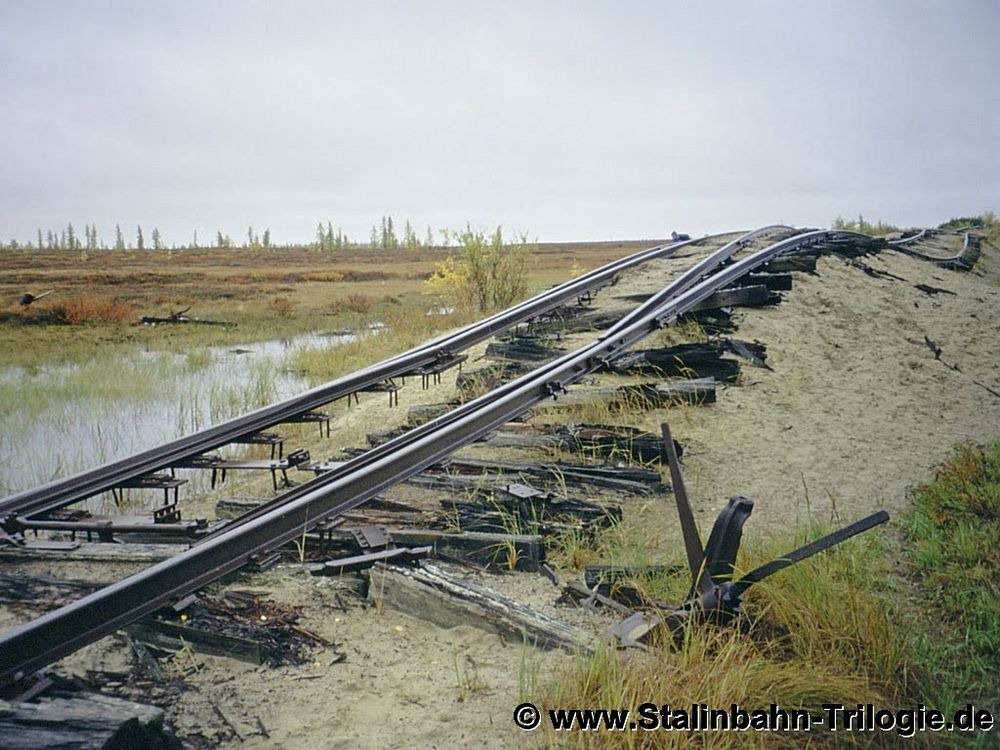The line was never completed, yet tens of thousands workers forced on the project perished while attempting to.
Prisoner-workers building the SalekhardIgarka Railway.
Photo from the book “Gulag” by Tomasz Kizny.
Nevertheless, construction of the railroad began in 1947.
The Gulag camps provided Stalin a cheap and expendable workforce that he could assign to any project.
Photo credit:ComIntern/Wikimedia
Working conditions were brutal.
In winter, temperatures plummeted to -60C and blizzards chilled the body to the core.
In summer, mosquitoes, gnats, and parasites brought diseases and death.
Life was cheap and beatings were common.
Only the most resilient of workers survived.
The immense technical challenges of laying a line over permafrost were never effectively overcome.
Lack of machinery, poor logistics and shortage of materials ensured that the quality of the work was sub-standard.
Bridges collapsed, melt and rain water washed out embankments, and the bogs swallowed the railway tracks.
Construction came to an end after the death of Stalin in 1953.
It will never be known how many people actually died because no accurate records were kept.
Some say, one-third of the total number of workers perished.
The line, now renamed the Northern Latitudinal Route, was opened in 2015.
Photo credit:CharlyVJN/Panoramio
Sources:Wikipedia/Basement Geographer/BBC














